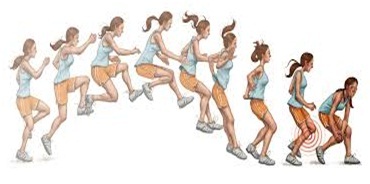Anterior Cruciate Causes, Symptoms, Diagnosis and Treatment

Anterior cruciate ligament injury (ACL)
What is ACL injury?
An anterior cruciate ligament injury is the over-stretching or tearing of the anterior cruciate ligament (ACL) in the knee.
A tear may be partial or complete. It most commonly occurs during sports involving sudden stops and changes in direction including basketball, soccer, tennis etc.
Causes of ACL injury:
An ACL injury can occur during to the following causes:
- Getting hit very hard on the side of the knee, such as during a football tackle
- Overextending the knee joint
- Stopping or changing directions suddenly
- Landing awkwardly from a jump
Moreover, ACL injuries often occur with other injuries. For example, an ACL tear commonly occurs along with tears to the MCL and the shock-absorbing cartilage in the knee (lateral meniscus).
Symptoms of ACL injury:
ACL injury is marked by a few symptoms which include:
- A loud “pop” sound
- Severe pain and inability to continue activity
- Knee swelling that usually worsens for hours after the injury occurs
- A feeling of instability or “giving way” with weight bearing (occurs in mild injury)
Diagnosis for ACL injury:
Tests carried out in order to diagnose ACL injury include:
- Pivot-shift test
- Anterior drawer test
- Lachman test
- MRI scans for visualization
- Ultrasound to visualize internal structures
Treatment for ACL injury:
Treatment for ACL injury can be divided into conservative management, surgery.
-
Conservative management:
This term is used for non-surgical treatment of ACL injury. It includes:
- physical therapy
- Using a knee brace.
- Range-of-motion exercises to regain your full knee
- Muscle strengthening and stability exercise
-
Surgery:
A torn ACL can’t be successfully sewn back together, so the ligament is usually replaced with a piece of tendon from another part of the knee or leg. A tendon graft from a deceased donor also may be an option. This surgery is usually performed through small incisions around the knee joint.
Common risk factors and complications:
Women are significantly more likely to have an ACL tear than are men participating in the same sports.
The reason for this is that women tend to have a strength imbalance, with the muscles at the front of the thigh (quadriceps) being stronger than the muscles at the back of the thigh (hamstrings).
Moreover, people who experience an ACL injury are at higher risk of developing knee osteoarthritis and arthritis.
By : Natural Health News




